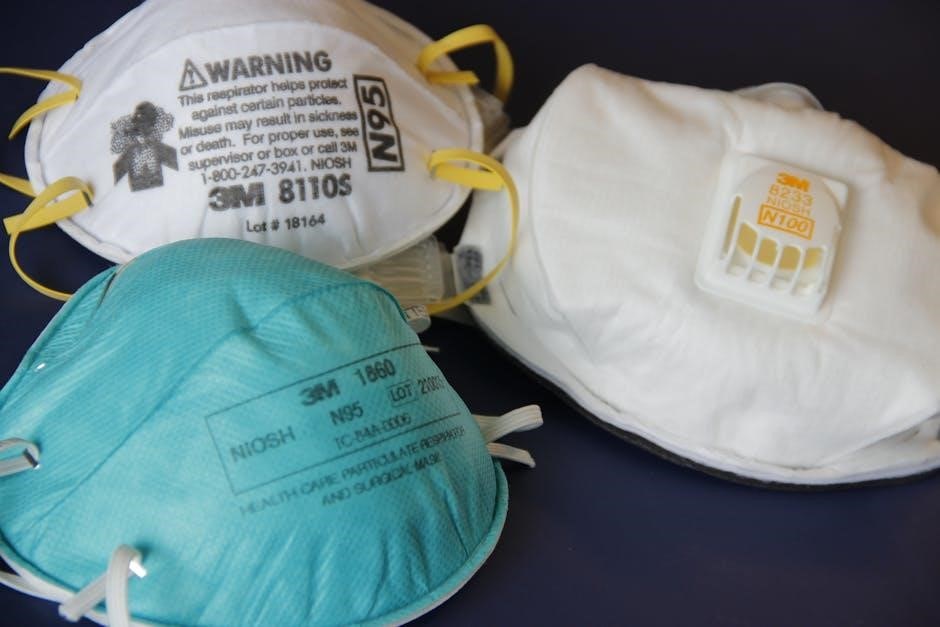An emergency medical consent form is a legal document allowing caregivers to make medical decisions for minors in emergencies. It ensures timely treatment when parents are unavailable. Downloading a PDF template provides a structured format for permissions and financial responsibilities, serving as a safeguard for all parties involved.

Key Elements of an Emergency Medical Consent Form
A consent form includes patient information, guardian consent, treatment permissions, financial responsibility, and notarization. These elements ensure the form’s validity and provide clear guidance for medical personnel in emergencies.
Child or Patient Information
This section requires detailed personal and medical details about the child or patient. It typically includes the child’s full name, date of birth, allergies, medications, and any pre-existing medical conditions. Emergency contact information, such as the parents’ or guardians’ names, phone numbers, and addresses, is also essential. Additionally, the form may ask for the child’s medical history to inform healthcare providers of any critical health issues. Accurate and complete information ensures proper treatment and avoids potential risks. This section is crucial for identifying the patient and providing relevant medical context in an emergency. It must be filled out clearly and accurately to prevent delays or misunderstandings in care. Proper documentation of this information is vital for legal and medical purposes.
Guardian or Caregiver Consent
This section verifies the guardian’s or caregiver’s authority to grant medical consent for the child. It includes the caregiver’s full name, contact information, and relationship to the child. The form must be signed and dated, confirming the caregiver’s permission for medical staff to administer emergency treatment. Legal guardianship documents may be required if the caregiver is not a biological parent. This section ensures healthcare providers are aware of who has legal authority to make decisions, preventing delays in critical situations. It also protects the caregiver from liability when acting in the child’s best interest. Clear consent documentation is essential for compliance with medical and legal standards, safeguarding both the child and the caregiver. Proper notarization may be required for added validity, especially in formal settings like hospitals or childcare facilities. This ensures the form is legally binding and recognized by medical professionals.
Medical Treatment Permissions
This section outlines the specific medical treatments the guardian consents to in an emergency. It ensures healthcare providers know the boundaries of permitted care. The form may list approved treatments, such as surgeries, medications, or blood transfusions, or grant general consent for necessary interventions. Detailed permissions prevent delays and ensure appropriate care. It may also specify allergies or religious objections. Clear consent protects both the child and caregiver legally. The form should be comprehensive to avoid misunderstandings. This section is crucial for ensuring timely, appropriate medical responses. Proper documentation guarantees that medical staff act within the guardian’s consent, respecting their wishes. It also safeguards the caregiver from liability when making decisions in the child’s best interest. This ensures ethical and legal compliance in emergency situations.
Financial Responsibility
This section clarifies who bears the financial burden for medical expenses incurred during treatment. Parents or guardians typically agree to cover costs, ensuring providers are reimbursed. It may outline payment methods or insurance details. The form prevents disputes by stating the responsible party. It also ensures uninterrupted care, as providers know payment is secured. Financial clauses protect both families and healthcare institutions. This section is essential for transparency and accountability. It guarantees that emergency treatments proceed without delays due to billing concerns. Parents affirm their commitment to covering expenses, providing peace of mind for all parties involved. This financial agreement is a critical component of the consent form, ensuring smooth operations in emergencies. It safeguards against unexpected financial liabilities for healthcare providers. Clarity in this section is vital to maintain trust and cooperation.
Notarization Requirements
Notarization is often required to validate the authenticity of the consent form. The signer must appear before a notary public, providing legal verification; This ensures the document’s legitimacy and prevents fraud. Some jurisdictions mandate notarization for medical consent forms, especially when granting authority to non-parents. The notary verifies the signer’s identity and confirms their willingness to grant consent. The form typically includes a notary acknowledgment section, detailing the signatory’s name, birthdate, and allergies. This step is crucial for ensuring the form’s enforceability in legal and medical settings. Notarized forms are recognized as legally binding, offering peace of mind for parents and caregivers. Renewal may be necessary if guardianship changes or the child’s information updates. This formal process guarantees that the consent form holds up in emergencies, protecting all parties involved. Proper notarization ensures clarity and authority, making it a critical step in completing the document.

How to Download and Use Emergency Medical Consent Forms
To obtain an emergency medical consent form, visit reputable websites offering free PDF templates. These forms are customizable to suit individual needs, ensuring they cover essential permissions and details. Once downloaded, carefully fill in the required information, such as the child’s name, birthdate, allergies, and medical conditions. Include the caregiver’s or guardian’s contact details for emergencies. The form should be signed and, if required, notarized to ensure its validity. Keep the completed document in an easily accessible location, such as with the child’s caregiver or in a visible spot at home. Provide copies to schools, daycares, or babysitters to ensure it’s available when needed. Regularly review and update the form to reflect any changes in guardianship or medical information. This ensures the form remains legally binding and relevant in case of an emergency.
Step-by-Step Guide to Filling Out the Form
Filling out an emergency medical consent form is straightforward when done systematically. Start by downloading a PDF template from a trusted source. Open the document and fill in the child’s name, birthdate, and medical history, including allergies and current medications. Next, provide the guardian’s or caregiver’s contact information and their relationship to the child. Clearly state the scope of medical permissions, such as emergency treatments or surgeries. Include financial responsibility details, ensuring clarity on who will cover expenses. Sign and date the form in the presence of a notary if required. Finally, distribute copies to relevant parties, such as schools or babysitters, and keep the original in a secure, accessible location. Review and update the form annually or when personal circumstances change to maintain its validity and relevance.
Legal Implications and Validity of the Consent Form
An emergency medical consent form is a legally binding document ensuring caregivers can act on behalf of a child in medical emergencies. For the form to be valid, it must include the child’s and guardian’s details, a notary’s seal if required, and clear permissions for treatment. The form protects both the caregiver and medical providers by granting explicit authority to make decisions. It is essential to comply with state-specific laws, as requirements vary. The form remains valid until revoked or updated, typically annually or when guardianship changes. Ensuring the document is notarized and witnessed enhances its legal standing. Parents must understand that delaying treatment without consent can lead to liability issues. Always verify local regulations to ensure the form meets all legal criteria and remains enforceable in emergencies.

Why an Emergency Medical Consent Form Is Essential
An emergency medical consent form is crucial for ensuring minors receive immediate care when parents are unavailable. It grants legal authority to caregivers or medical providers to make decisions, preventing delays that could worsen a child’s condition. This document is particularly vital for children in daycare, school, or with temporary guardians. By providing clear permissions, it safeguards both the child and the caregiver from potential legal or medical complications. The form also outlines financial responsibilities, reducing conflicts over treatment costs. Having a PDF template readily available ensures parents can quickly create and share the document, offering peace of mind. It acts as a protective measure, ensuring a child’s health and well-being are prioritized during unexpected situations. Every family with minors should consider having this form to avoid emergencies turning into legal or medical crises.

Examples and Templates for Emergency Medical Consent Forms
Various emergency medical consent form templates are available online, offering customizable solutions for parents and guardians. These templates, often in PDF format, provide structured layouts for essential details such as the child’s medical history, allergies, and emergency contact information. Many templates include sections for caregiver permissions, financial responsibility clauses, and notarization requirements. For instance, childcare centers and schools frequently use specific forms designed for their needs. Websites like Speedy Template offer free downloads, enabling users to edit and print the forms easily. Some templates also include placeholders for signatures and dates, ensuring compliance with legal standards. These resources simplify the process of creating a legally binding document, providing peace of mind for families. By using a template, parents can ensure their child’s medical needs are addressed promptly in an emergency. These forms are invaluable for any situation requiring immediate care.
An emergency medical consent form is a vital document that ensures children receive timely medical care when parents or guardians are unavailable. By providing clear permissions and financial responsibilities, it safeguards both the child and caregiver. Accessing a PDF template simplifies the process, offering a structured format that meets legal requirements. Parents can customize these forms to include essential details like medical history and emergency contacts, ensuring preparedness. Having such a document in place provides peace of mind, knowing that a child’s health and well-being are protected in critical situations. It is a responsible and proactive step for every family to take, ensuring that medical decisions can be made swiftly and effectively when needed most.



